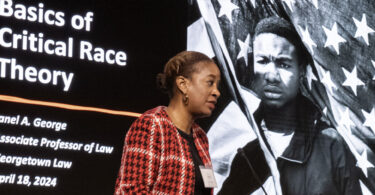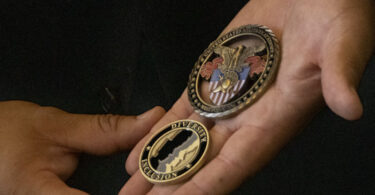By Greg Salsbury
STARRS Board of Advisors
Thomas Jefferson was no fan of newspapers, but famously said about the proposition of choosing between government without newspapers and newspapers without government, he would not hesitate to choose the latter.
His observation was reflective of two things. Firstly, and obviously, it makes clear that newspapers represented the dominant medium of the day. Secondly, it spoke of his suspicion of government and his view or hope this unbridled medium might help keep it in check.
In recent months, thanks to Elon Musk’s release of the Twitter Files (now “X”), the Facebook (now rebranded as “Meta”) documents obtained by the Judiciary Committee, and other discoveries, we now know that the White House (aka – The Democrat party) and an assortment of governmental agencies have persistently exerted heavy influence, including monetary payoffs, to control information on social media.
Subpoenaed documents from other firms like Apple, Amazon, and Microsoft are supposed to be forthcoming and may reveal more.
We already know that many of the suspicions labeled for years as conspiracy theories, dealing with shadow banning, fake claims of Russian disinformation, de-platforming, censorship, account lock-outs, and more were true.
Just how big of a deal is this?
To answer that question, you first need to have a handle on the significance and influence of social media overall. Few Americans do.
Over the centuries and decades, the balance of power has shifted amongst various media – in-person speeches, newspapers, books, theater, radio, magazines, billboards, television, movies, etc.
While newspapers may have been the dominant medium in Jefferson’s day, they were not pervasive. A relatively small portion of the population had access to them, and word of mouth still represented a powerful competitor.
As this pervasiveness escalated, so did the emergence of alternative media – radio and then television – keeping that power balance somewhat in check.
However, since the advent of the internet and particularly over the last decade, the significance of virtually all other media has been diminished dramatically by a new competitor – the digital leviathan.
Whether the digital format is audio, video, news websites, advertising, or social media, it is expanding as the old world media have been relegated to niche or dying, or both.
Pew tells us that more than 8 in 10 U.S. adults now get their news digitally from their smartphone, computer, or tablet – far more than any other format.
Okay, but isn’t social media merely one of the many influential digital channels impacting information flow and opinion formation? Well, not quite.
More accurately it is the 800 pound-gorilla in a rapidly shrinking cage. Since the advent of the smartphone, social media usage has absolutely exploded, with American usage rocketing from 5% in 2005 to over 70% today. Some estimates indicate that as much as 38% of all internet time today is devoted to social media.
Part of the reason for the meteoric rise is that access to the information is as simple as reaching in your pocket. It is estimated that Americans now spend about one third of their waking hours on their mobile phones – about 4.1 hours per day – with 7 of every 10 minutes spent on social media.
Facebook, which also owns two other surging, social media firms, Instagram and WhatsApp, remains the social media king, commanding 53% of all usage. The statistics regarding adoption rates, minutes of usage, and influence our mind numbing.
In his book “The Four,” professor Scott Galloway calls Facebook “the most successful thing in the history of humankind.” The vast majority of Facebook’s nearly 3 billion users (74%) visit the site daily, and more than half of them visit it several times per day.
While not matching Facebook in usership, Twitter is referenced by 70% of U.S. journalists as the site they use most for their jobs. Along with its hashtag system, this gives Twitter a strong magnifying effect.
One of the fastest rising stars in social media is TikTok, an app launched in 2016 and specializing in short videos. Their usership mushroomed to over one billion in just five years – a milestone that required double that time even for Facebook.
But if you thought that TikTok was merely the place for dancing bikini-clad girls and guys performing unadvisable skateboard stunts, think again. A quarter of adults under the age of 30 now report getting their news from this source.
So, clearly, social media is the dominant and growing digital channel, and the 5” x 3” screen is now the dominant device for that channel. It is the central educational, social, and economic window in the lives of most Americans.
When you have the power to promote or disparage a given person, claim or story, or as importantly, prevent that claim or story from even appearing on that screen, preventing tens of millions, perhaps, even billions of eyes from even seeing it, you wield more power than Joseph Pulitzer or William Randolph Hearst could ever have dreamed of.
Someone would go so far as to say such power could even influence national elections.
So how big of a deal is it that the White House, governmental agencies, and the most influential social media companies in the world all colluded to both push false narratives and censor true information from social media?
Referring just to the Twitter Files revelation, author John Davidson has declared,
. . . it is one of the most important news stories or our time … [and]encompasses, and to a large extent connects, every major political scandal of the Trump-Biden era. Put simply, the Twitter Files reveal an unholy alliance between Big Tech and the deep state designed to throttle free speech and maintain an official narrative through censorship and propaganda.”
Given Jefferson’s view on media and government, consider how horrified he would have been at another proposition – not only a government with newspapers (social media), but a government controlling the newspapers (social media).
That is where we are today. And it is a very big deal indeed.








Leave a Comment